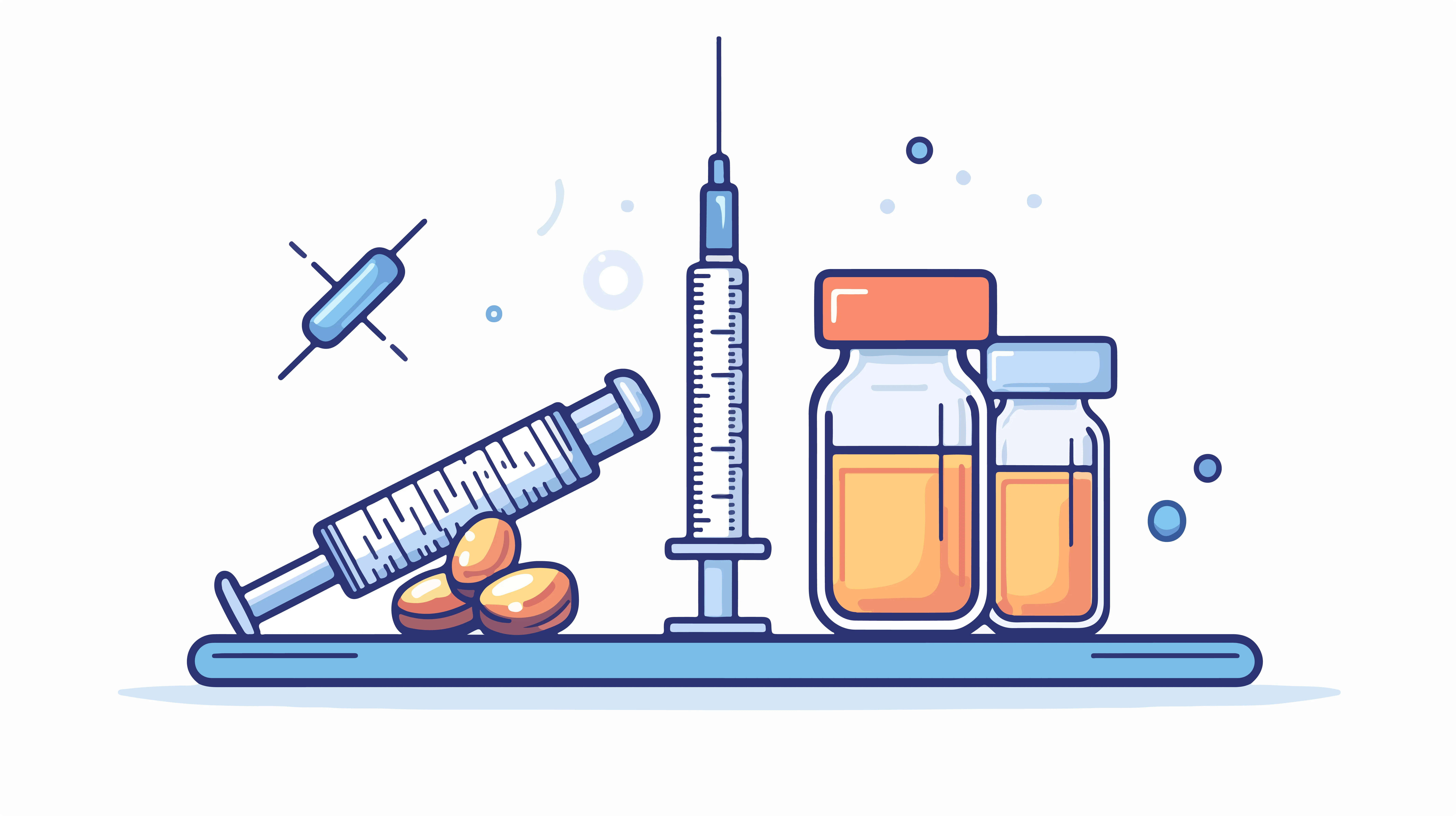Pediatric injectable packaging and labelling is one of the most important aspects of pharmaceutical manufacture, where safety, accuracy, and legal compliance come together to safeguard the most susceptible patients—children. Pediatric formulations require an even higher level of care than adult drugs because of changes in metabolism, weight-based dosage, and the incapacity of young patients to express signs of adverse reactions. Therefore, it is not only necessary to comply with safety and legal standards, but also morally required to make sure that the packaging and labelling of these injections adhere to them. To support this, the Pharma Packaging & Labelling Forum organized by World BI brings together suppliers and manufacturers, enabling them to find the ideal partners for their packaging and labelling needs.
Pediatric Injectable Packaging Presents Particular Difficulties:
The packaging problems for pediatric injections are distinct and quite different from those for adult formulations. They involve the following difficulties:
Accuracy of Doses:
- Children need dosages based on their age or weight.
- Packaging needs to provide precise dosage in order to prevent under- or overdose, which in severe situations might be lethal.
- It is usually better to use prefilled syringes or vials with distinct gradations in order to reduce human mistake.
Tamper-Evident Design:

- It's critical to make sure the product hasn't been tampered with before being administered.
- Breakable caps, tamper-evident seals, and protective exterior packaging all contribute to the product's integrity and credibility.
Needle Safety:
- Injuries from needles are more common in pediatric patients.
- Accidental injuries and infection hazards can be decreased by implementing needle safety devices or needle-free administration methods.
Material Safety:
- Packaging materials should be non-toxic, safe for children, and compatible with the medication's formulation.
- Materials must, for example, not react with the injected medicine or leak dangerous compounds.
Frameworks for Regulation of Pediatric Injections:
Packaging and labelling of pharmaceuticals for children are governed by a number of laws. Although they differ by area, these usually center on making sure kids are safe, giving the right dosage, and communicating clearly. The main regulatory agencies and their areas of interest are:
FDA (Food and Drug Administration of the United States):
- According to the FDA's Labelling Requirements for Prescription Drugs, if a medication is meant for children, the label must include information about pediatric usage.
- The FDA also promotes the use of injectable medication packaging designed specifically for children.
The European Medicines Agency, or EMA:
- Detailed Pediatric Investigation Plans (PIPs) are required by the EMA, and they must take labeling and packaging safety into account.
ICH (International Council for Harmonisation):
- International Council for Harmonization (ICH) guidelines like ICH Q8 (R2) and ICH Q9 offer a framework for risk management and pharmaceutical development, fostering knowledge of products and processes, particularly for high-risk groups like children.
USP (United States Pharmacopeia):
- The United States Pharmacopeia (USP) standards, which cover labelling specifications, sterility, and package integrity, are essential to the quality control of injectables.
Top Techniques for Pediatric Injectable Containers:
Adopting best practices designed especially for pediatric usage is necessary for pharmaceutical firms to guarantee both safety and regulatory compliance. Among them are:
1. Simple and Direct Labelling:
In order to prevent pharmaceutical mistakes, labelling needs to be created. It includes:
- Making use of readable typefaces with sufficient distance.
- Steer clear of symbols and acronyms that might cause misunderstandings.
- Making the target age group or weight range obvious.
- Giving dosage guidelines tailored to children's use.
- Warnings and precautions should be noted.
- For caregivers who struggle with language or health literacy, multilingual labels and pictograms can also assist them comprehend better.
2. Unit-Dose Packaging:
- Prefilled syringes or single-dose vials lower the possibility of mistakes in dosage and contamination.
- When quick and precise dosage is necessary in emergency situations, they are quite helpful.
3. Barcoding and Serialization:
- The integration of barcodes and serialization codes facilitates the tracking and tracing of products across the supply chain.
- This guarantees the legitimacy of the medication and aids in pharmacovigilance initiatives, enabling prompt reactions to any negative effects in children that may be reported.
4. User-friendly But Child-Resistant Designs:
- Although child-resistant features are valuable, caretakers or healthcare professionals shouldn't be able to use them improperly.
- When designing packaging for injectable drugs, safety and accessibility in clinical settings must be balanced.
5. Stability and Storage Considerations:
- In order for injections to be effective, children may need to be stored under particular circumstances.
- Packaging should include explicit storage instructions and visual cues about temperature exposure, such as thermo-chromic labels.
6. Patient and Caregiver Education Resources:
- Educational resources can improve safe administration and lessen caregiver concern. Examples of these include QR codes on packaging that connect to instructional films or digital pamphlets.
Innovation in Pediatric Injectable Packaging:
- To increase pediatric medicine safety, the pharmaceutical sector is witnessing some amazing advancements.
- RFID tags, integrated sensors, and NFC-enabled devices are examples of smart packaging technologies that are being used to track storage conditions and confirm authenticity.
- For vaccinations and medicinal agents, several businesses are also creating needle-free injectors and micro needle patches, which will greatly lessen the anxiety and anguish that children experience while receiving conventional injections.
Cross-functional Teams' Function:
One department is not responsible for ensuring the safety and compliance of pediatric injectable packaging. Working together, it calls on:

- To guarantee medicine and packaging material compatibility, R&D and formulation scientists.
- Regulatory Affairs, to conform to international norms and foresee future developments.
- To carry out thorough stability and sterility testing, quality assurance.
- Marketing and Communications to provide easily comprehensible label content.
- Experts in human factors to assess how well parents and healthcare professionals can use the package.
Case in Point: Lessons from Real-World Incidents:
- After labelling errors resulted in the administration of double the allowed dosage, a pediatric pain treatment injectable in a European nation was recalled in 2017.
- The necessity for distinct packaging for adult and pediatric formulations, distinct dosage delineation, and labelling that is easy for caregivers to understand was highlighted by this incidence.
- These instances operate as warnings, highlighting the significance of proactive safety design and risk reduction techniques in pediatric medications.
World BI Pharma Packaging & Labelling Conferences:
Pediatric injection labelling and packaging are essential components in protecting children's health. Pharmaceutical firms need to go above and beyond compliance to put in place designs and processes that encourage safety, lower mistakes, and foster confidence among caregivers and healthcare professionals. Thanks to regulatory backing and technical breakthroughs, we are more equipped than ever to guarantee that even the tiniest patients receive the best treatment possible. Exclusive gatherings are organized by the Pharma Packaging and Labelling Conference, which provides a platform for distinguished leaders, Artwork Professionals, and Industry experts from different companies to come together with the common goal of promoting worldwide knowledge.
For more information, kindly visit World BI.